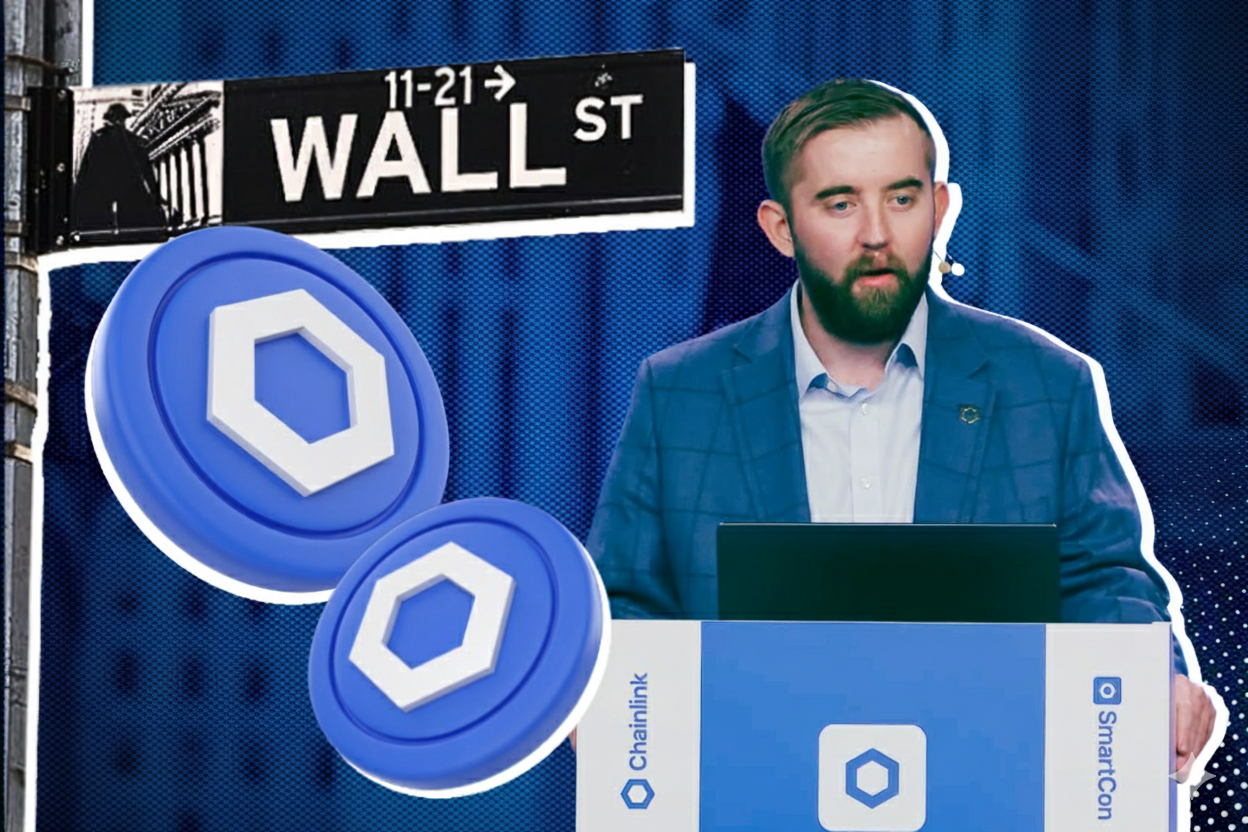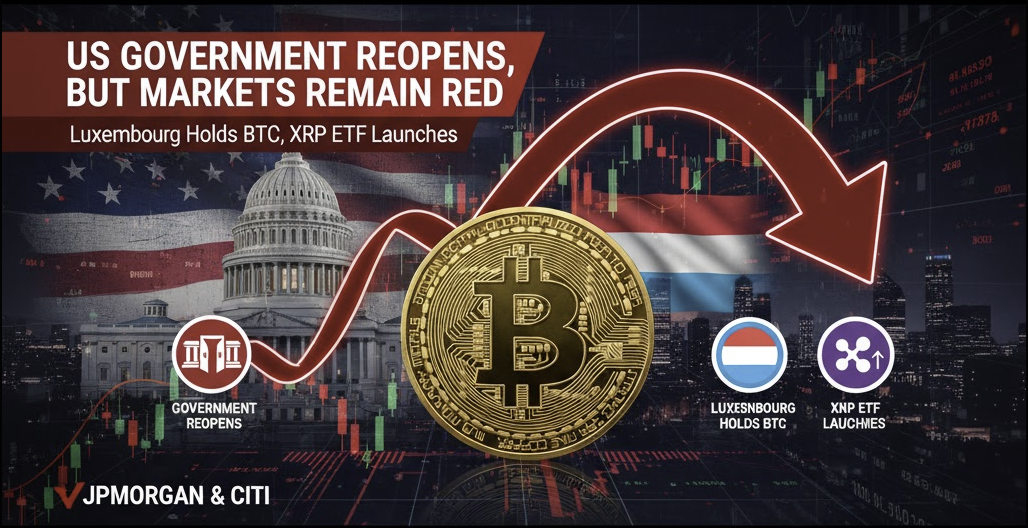US-listed companies are aggressively accumulating altcoins, effectively transforming their stocks into proxies for the crypto market. But is this trend a sophisticated exit strategy for major industry players like GSR, ConsenSys, and Tron, or a genuine long-term bet on digital assets?
The Genesis and Rise of the Altcoin Treasury Model
The altcoin treasury is a financial strategy increasingly adopted by publicly traded companies. It involves a company purchasing altcoins through stock issuance, then holding these altcoins as long-term reserves on its balance sheet. This concept isn't entirely new; Strategy (formerly MicroStrategy) pioneered it. Since 2020, this Nasdaq-listed company has consistently accumulated Bitcoin as a reserve asset, replacing cash, bonds, and traditional stocks, despite the inherent volatility risks. The effectiveness is undeniable: MSTR stock surged over 3,000% in just five years. This success laid the groundwork for the broader crypto treasury trend.
However, in its initial phase, this trend revolved solely around Bitcoin, an asset already widely perceived as "digital gold." By 2024, many companies began targeting altcoins, particularly Ethereum, as part of their long-term accumulation strategies. The middle of 2025 marked a boom in this trend, with small and medium-sized enterprises announcing plans to raise capital specifically for altcoin purchases. BitMine Immersion Technologies (BMNR) serves as a prime example.
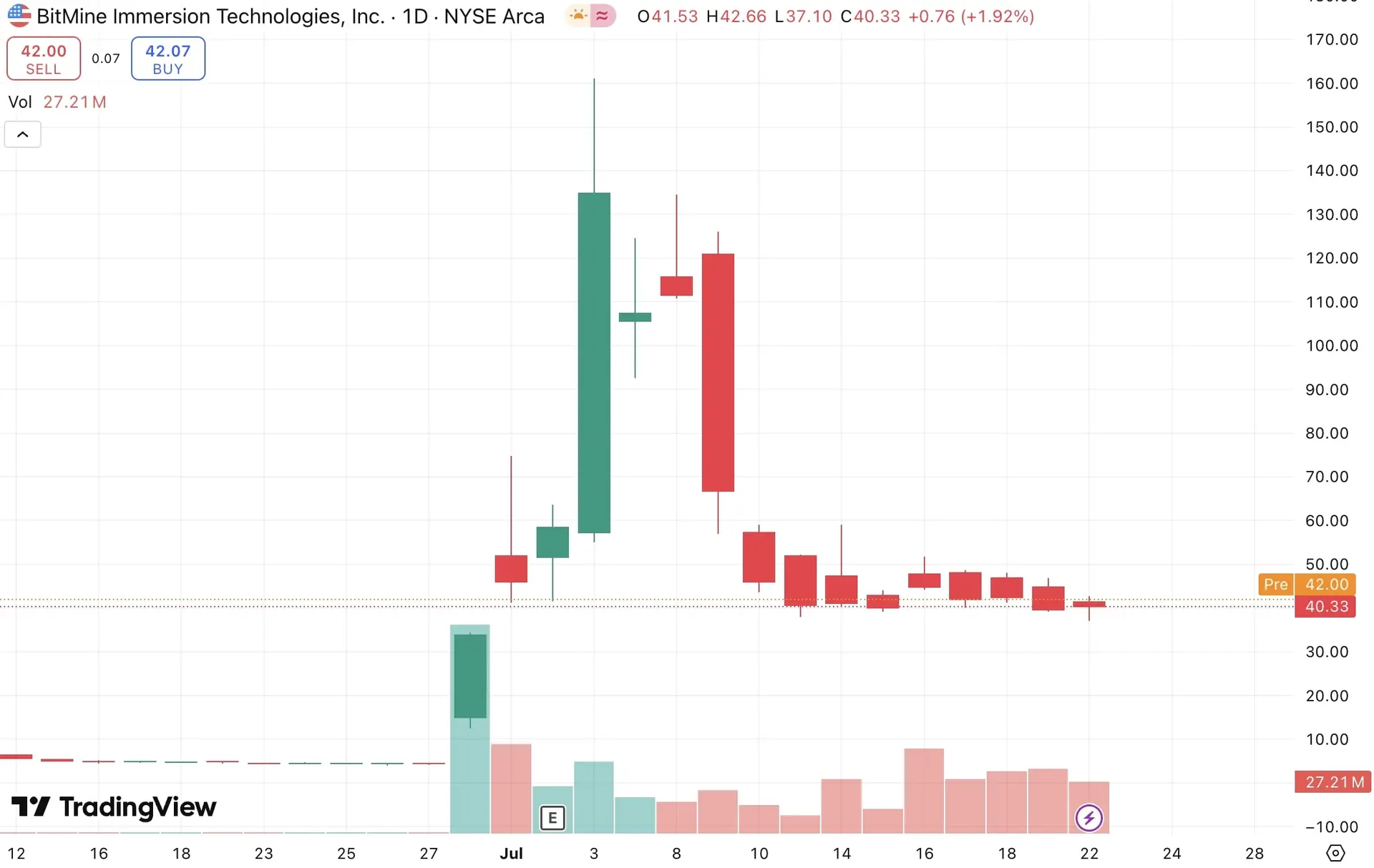
From a relatively small Bitcoin mining company, BitMine unexpectedly announced plans to raise $250 million to buy ETH. This move coincided with the appointment of Thomas Lee, co-founder of Fundstrat, as Chairman of the Board, with the goal of transforming BitMine into one of the largest Ethereum holders in the market. Following this news, in the first week of July 2025, BMNR stock surged over 3,000% from $4 to approximately $135.
BitMine stock surged over 3,000% in one week. Source: TradingView
The spread of this model wasn't limited to Ethereum. Many companies also shifted to accumulating Solana, Tron, and other trending altcoins. This period saw the popularization of the term "crypto stock": a stock listed on a traditional exchange but tightly correlated with cryptocurrencies. This phenomenon was further propelled by the US passing its first stablecoin law in early 2025, which significantly legitimized the inclusion of digital assets on corporate balance sheets.
Prominent Examples of the Altcoin Treasury Model
SharpLink Gaming (SBET): The Largest ETH Altcoin Treasury Whale
In May 2025, SharpLink Gaming shocked the market by announcing it would convert its entire treasury into Ethereum. In just the first five days of July, the company issued additional shares, raising $413 million, and used the majority of these funds to acquire an additional 74,656 ETH. Notably, SharpLink also conducted an OTC transaction with the Ethereum Foundation to purchase 10,000 ETH directly.
According to data from Wu Blockchain on July 22, SharpLink led the rankings, holding over 360,000 ETH with a total value of $1.33 billion. Concurrently, the company is staking its entire ETH holdings and has earned 415 ETH in rewards in just a few weeks.
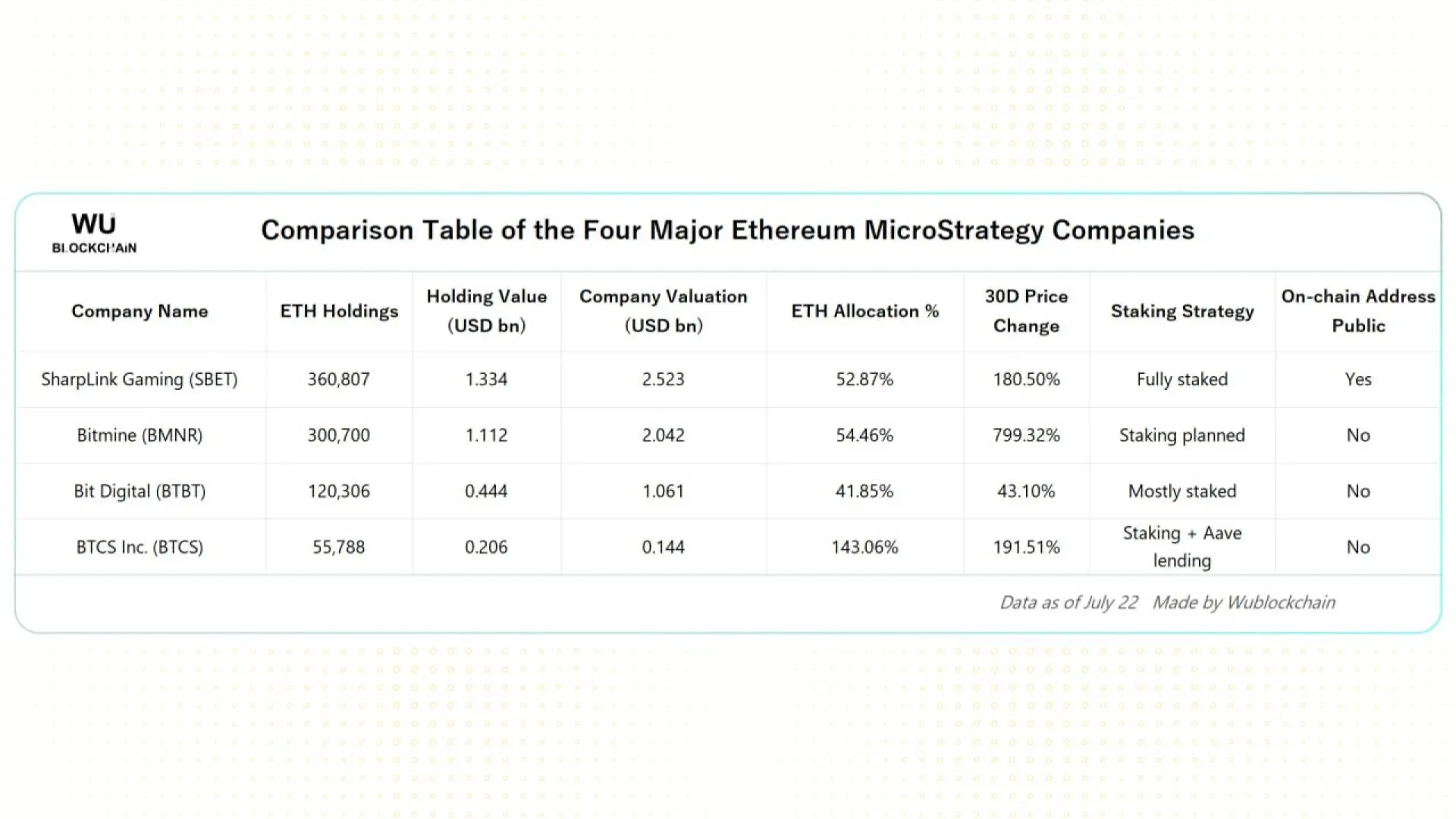
Earlier, in May, Joseph Lubin, co-founder of Ethereum and CEO of ConsenSys, joined SharpLink as its chairman. This news, along with the announcement of the Ethereum treasury strategy, helped SBET stock surge approximately 2,700% by the end of May. The company also has plans to issue $6 billion in shares, enough to accumulate an additional 1% of the total ETH supply.
BitMine Immersion (BMNR)
Once a small-scale Bitcoin mining company, BitMine Immersion Technologies shifted its focus to an Ethereum reserve strategy. In June 2025, the company raised $250 million through stock issuance, using all proceeds to buy ETH and stake it long-term. BitMine aims to accumulate 5% of the total ETH supply, equivalent to approximately 6 million ETH valued at $22 billion.
By late July, the company had accumulated over 300,000 ETH. The involvement of billionaire Peter Thiel, who acquired a 9.1% stake in the company, and a $182 million investment from ARK Invest (led by Cathie Wood) further solidified the company's position in the race to become the "MicroStrategy of Ethereum." However, BitMine has not abandoned Bitcoin mining. CEO Jonathan Bates confirmed that the company will operate two parallel strategies: continue mining BTC to generate cash flow, while accumulating ETH as a strategic asset and participating in staking to generate passive income.
Bit Digital (BTBT)
Bit Digital is another Bitcoin mining company that fully transitioned to Ethereum accumulation. In July 2025, the company announced it had sold all its remaining BTC and raised $172 million to purchase ETH. As a result, Bit Digital's Ethereum holdings increased from 24,434 ETH at the end of Q1 to over 120,000 ETH.
"Ethereum has the potential to reshape the entire financial system," commented CEO Sam Tabar. Bit Digital currently operates large-scale validator infrastructure, participates in staking, and provides node services, generating stable income from staking rewards. BTBT stock saw a week with over 60% gains after announcing its treasury conversion strategy.
Tron Inc. (TRON): The First Public Company to Bet on TRX
Another case is SRM Entertainment. In July 2025, following a merger with Justin Sun's Tron organization, this memorabilia sales company restructured and rebranded as Tron Inc. The company shifted to a digital asset management model, using TRX as its primary treasury asset. After the merger, Tron Inc. holds over 365 million TRX, the largest amount among publicly listed companies. SRM stock (soon to be rebranded as TRON) surged 57% in a single session after the announcement. Tron Inc. has also staked all of the aforementioned TRX on the JustLend platform, expecting to receive 10% annual interest.
Upexi (UPXI): Leading the SOL Treasury Accumulation
With the backing of market maker GSR, Upexi began purchasing SOL in April 2025, with each purchase valued in the tens of millions of dollars. As of July 23, Upexi had accumulated 1.9 million SOL, leading the ranking of SOL accumulation by publicly traded companies.
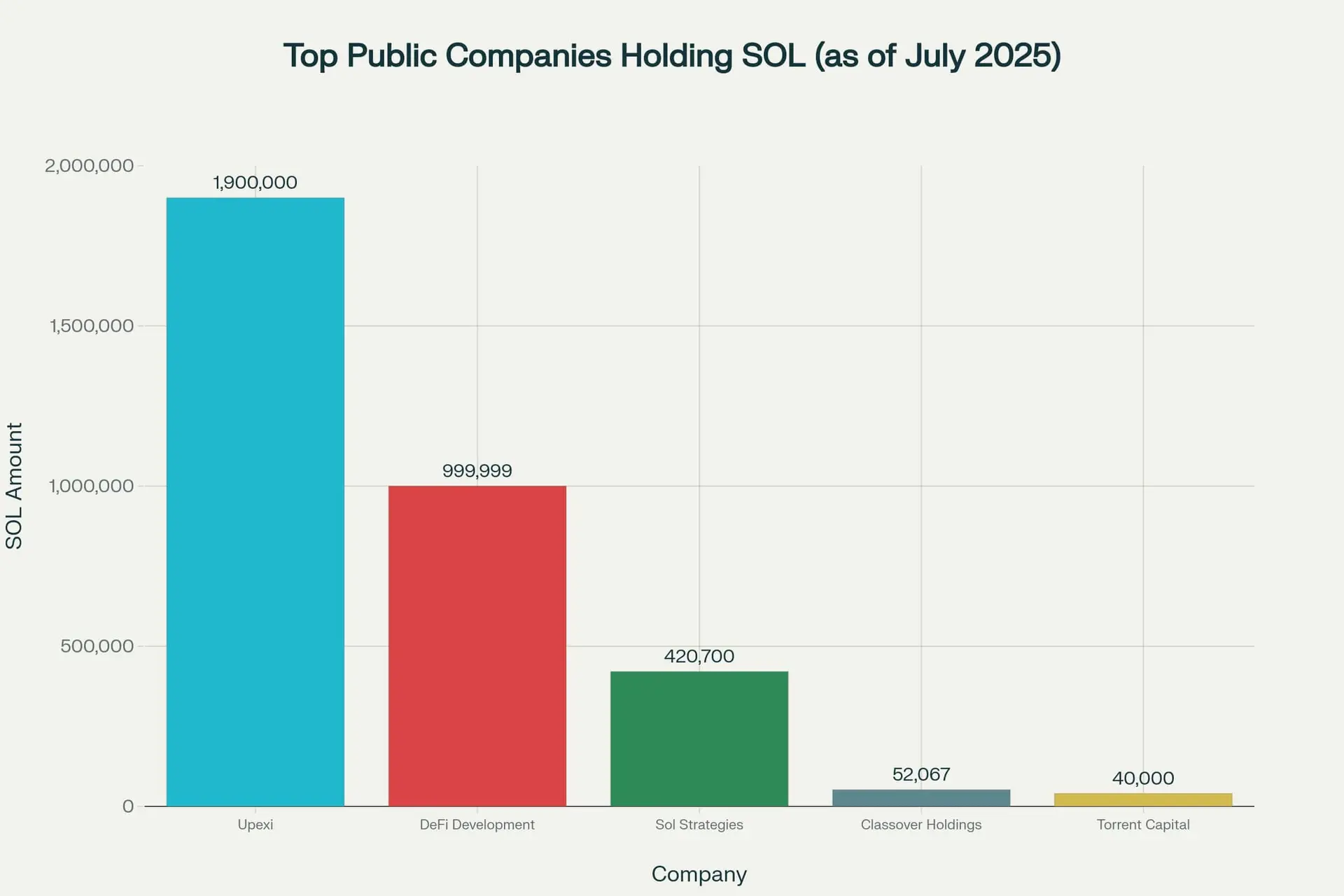
Almost all of the company's SOL is staked to generate passive income. With this amount of SOL, Upexi expects to generate approximately $26 million in annual staking revenue based on the current 8% interest rate.
DeFi Development Corp (DFDV): Potential to Borrow $5 Billion for SOL
DeFi Development Corp announced its SOL treasury strategy in early April 2025 and actively purchased the token in subsequent months. From July 14-20 alone, the company accumulated an additional 141,383 SOL, bringing its total holdings to 999,999 SOL (equivalent to nearly $200 million). DeFi Development Corp aims to achieve a reserve ratio of 1 SOL per share (SPS) by 2028.
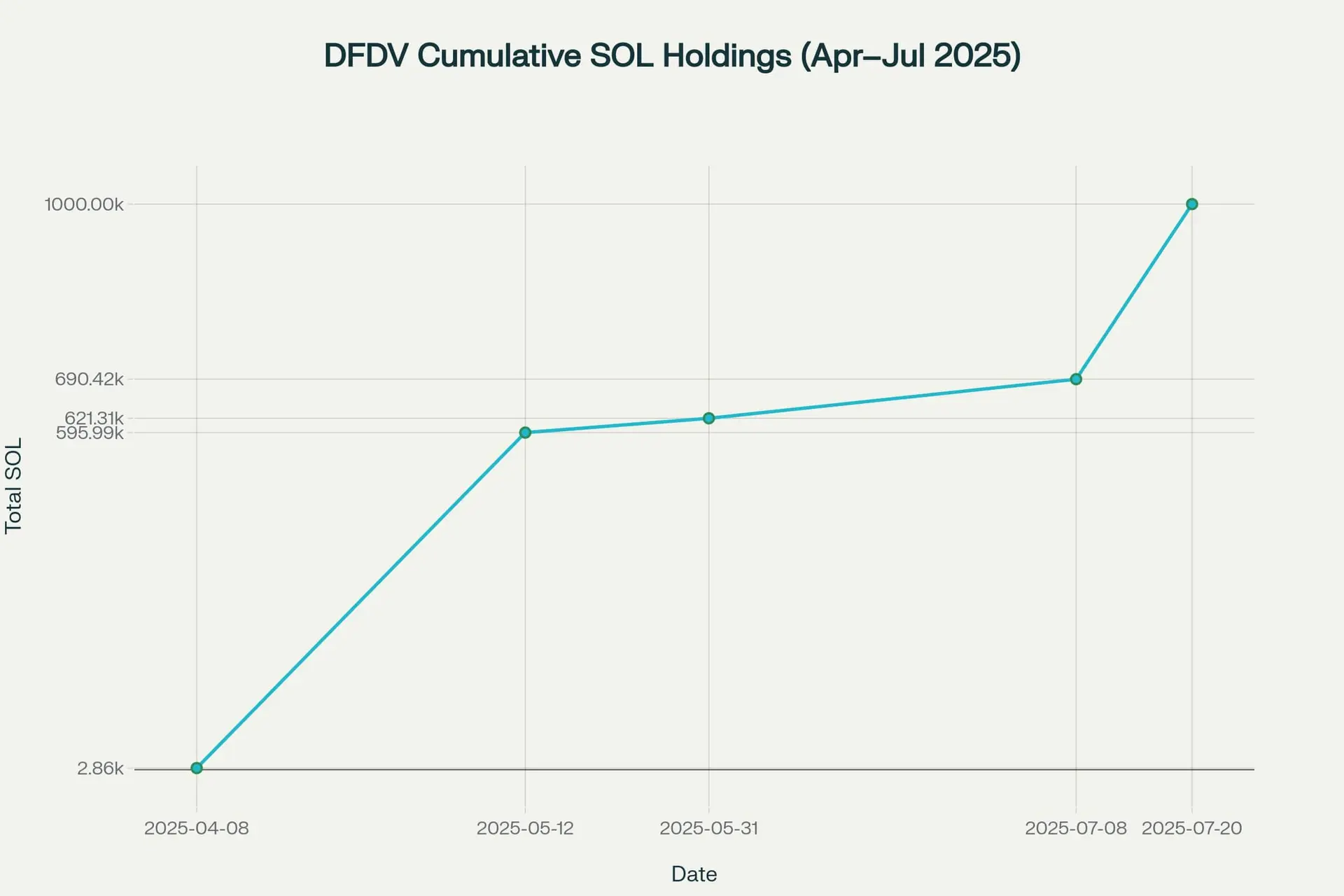
To support its strategy, the company has raised $19.2 million and still has a credit facility worth $4.98 billion, enough to expand its portfolio by tens of millions of SOL. The company is also staking SOL, earning 867 SOL in rewards in just one week. As a result of this strategy, the company's stock surged 500% in April and May but has since dropped nearly 30% from its July high due to dilution concerns.
Inside the "Altcoin Treasury" Machine
The altcoin treasury model is not simply about transferring funds into a crypto wallet and leaving them there; it's a structured financial strategy. The first step in this process is large-scale capital mobilization. Companies issue shares, either through public offerings or private placements to strategic investors.
For example, BitMine raised $250 million through a private placement (solely raising capital from investment funds), while Bit Digital garnered $172 million by selling shares to the public. Other cases, like DFDV, opted to establish multi-billion dollar credit facilities, ready to disburse funds incrementally to purchase altcoins at opportune moments.
After successfully raising capital, the next step is asset acquisition. Depending on their scale and influence, companies can acquire altcoins through OTC desks, institutional exchanges like Galaxy, FalconX, or Kraken. Some unique transactions even occur directly with the issuing entities, such as SharpLink's direct purchase of 10,000 ETH from the Ethereum Foundation.
To ensure the security of their digital assets, companies partner with professional custodians. BitGo and Fidelity Digital are two frequently utilized names. Coins are stored in cold wallets, with banking-standard security systems. This helps reassure shareholders, especially investors unfamiliar with crypto risks.
Beyond passive holding, many companies actively leverage their altcoin holdings to generate returns. The most common strategy is staking. Bit Digital and SharpLink both stake ETH. DFDV stakes SOL through its own company validators and also issues liquid staking token dfdvSOL, which it then uses in DeFi to optimize returns.
For the market to value their stock, companies are adopting a new metric: digital asset value per share. For instance, DFDV uses the "SOL per Share" (SPS) index, while SharpLink and BitMine use "ETH per Share." This approach transforms the company's stock into a proxy asset for altcoins, similar to how investors value an ETF based on its net asset value (NAV). If the rate of coin accumulation outpaces the rate of stock issuance, the net asset value per share increases, supporting stock price appreciation.
The altcoin treasury model would lack vitality without a strong media component. This is where CEOs and chairmen become "evangelists." Statements like "Ethereum will reshape the entire financial system" (Sam Tabar of Bit Digital), "TRX will be the backbone of global payments" (Rich Miller of Tron Inc.), or "Solana is the ideal platform for long-term growth" (Brian Rudick of GSR) not only capture media attention but also create a clear growth narrative. The involvement of major figures like Joseph Lubin, Tom Lee, and Peter Thiel in board leadership further bolsters traditional investors' confidence in this narrative.
Regarding motivation, this model offers two benefits to companies, at least in the short term. When a company announces its plan to acquire altcoins for its treasury, its stock price often surges because investors view this as an indirect way to gain exposure to the crypto market. Concurrently, the price of the acquired altcoins can also see a minor rally, providing short-term unrealized profit for the company.
However, this strategy is a double-edged sword. Companies purchasing altcoins face significantly higher risks than those buying Bitcoin, due to lower altcoin liquidity and higher volatility. Furthermore, because companies dilute their stock to acquire more tokens, if crypto asset accumulation doesn't keep pace with share issuance, the value per share will decline. And when the market reverses, this will be the final straw, causing investors to aggressively sell off their shares.
Is the Altcoin Treasury Model a Stealth Exit Strategy for Funds?
VIKTOR, author of the "Crypto Narratives" newsletter, recently exposed a recurring pattern in "altcoin treasury" deals, where public stocks become a vehicle for major crypto players to exit their positions from illiquid altcoins.
The process typically begins as follows: A Nasdaq-listed company, with a stock price of $10 and a market capitalization of just $10 million, "raises capital" of an additional $100 million from an investment fund, usually at the current market price. But instead of using these funds to develop products or expand business operations, the company uses the money to purchase a large quantity of locked altcoins, effectively becoming an "altcoin treasury company."
The critical detail here is that these locked altcoins might already be held in the investment funds' portfolios, and the act of "accumulating altcoins" indirectly helps these funds convert their locked tokens into tradable stock. As soon as the deal is announced, media coverage triggers a parabolic surge in the stock price, for instance, from $10 to $30 in just a few days. Meanwhile, most of the actual stock remains locked by agreement, leading to an extremely low "float" (shares available for public trading), which further inflates the price.
Funds holding stock with a cost basis of $10 face almost no risk. In the worst-case scenario, if the price returns to the $10 range, the stock price will still be backed by the altcoins held by the company, making it difficult for the price to fall further. Three months later, when the stock lock-up agreement expires, these funds can quietly offload their shares to a new wave of FOMO-driven investors at prices many times higher. And the cycle then repeats with another company.
"Undeniably, these types of deals offer many opportunities if you closely follow the narrative and pick the right timing," VIKTOR states. "But if you're a retail investor not participating in these private deals, then you are clearly at a disadvantage in this game."
VIKTOR's hypothetical scenario easily brings to mind the case of market maker GSR leading a $100 million funding round for Upexi in April 2025. GSR had previously disclosed in 2024 that the fund held significant long positions in SOL, raising questions about whether GSR's backing of Upexi to purchase SOL was simply for "Solana being the ideal platform," as the fund claimed.
Furthermore, this perspective can also be applied to SharpLink's case. SharpLink's chairman is also the co-founder of Ethereum and CEO of ConsenSys—a company closely tied to the Ethereum Foundation. Could SharpLink's ETH purchases be an exit strategy for insiders? And extending this further, could Michael Saylor's legendary Strategy (MicroStrategy) also be part of this game? This critical perspective highlights the potential for complex, self-serving financial maneuvers masked by the narrative of crypto adoption.
Disclaimer
This article is for informational purposes only and should not be considered financial advice. Please do your own research before making investment decisions.


.png)



